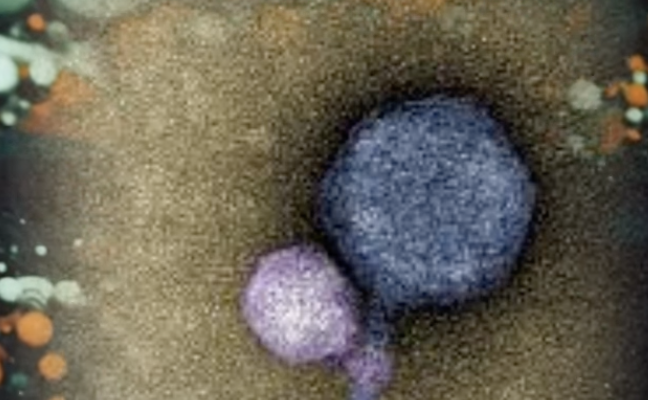
In 2020, Tagide deCarvalho, a professor in the Department of Biological Sciences at University of Maryland-Baltimore County was working in her lab studying viruses when she observed something truly strange. A virus she was studying had gotten “sick” and, in effect, had a virus of its own that was latched onto its “neck.”
The backstory of this viral attachment is like a master class in how wild and weird biology can be, reported The Washington Post.
The two microbes are both bacteriophages, viruses that infect bacteria, that were harvested from a clump of dirt in Poolesville, Md. Bacteriophages, also called simply phages, are among the most abundant organisms on Earth. There can be millions in a gram of dirt.
But with a special kind of microscope that uses a beam of electrons to capture images, deCarvalho witnessed a truly bizarre moment — kind of like a wildlife photographer who captures an animal behavior that no one had anticipated.
“I could see literally hundreds of them had this little guy attached at the neck, and it was clearly not random,” said deCarvalho, who manages the Keith R. Porter Imaging Facility at University of Maryland at Baltimore County. “We know that viruses can do some amazing, interesting things. But this is just another new thing that no one could have predicted we would see.”
SyFy explains how the new discovery works. All viruses rely on the biological help of organisms to replicate their genetic materials. Most adapt themselves to one or a few organisms, mostly other microbes, and some have adapted to attack particular systems in plant or animal bodies, including our own. Success for a virus means getting inside of a cell and hijacking its machinery to pump out viral copies. In order to survive, a virus needs to have a complete tool kit to get inside and take over a cell. But some viruses don’t have a complete tool kit and need the help of another virus to replicate. These relationships are known as satellite-helper systems and are relatively common in the microbial world.
In most cases, a satellite virus is capable of getting into a cell and incorporating itself, but not capable of replicating. So, they hunker down inside a cell and wait for their helper to show up and replicate their genetic material for them. The vampire virus can get inside of a cell, but is the first known case of a satellite which lacks the genes for integration. That means it can’t wait for its helper to show up, they both have to get inside the cell at the same time. And the vampire virus, dubbed the MiniFlayer, ensures it gets in at the same time by latching onto the “neck” of its helper and riding along.”
Speaking with SyFY, a colleague of deCarvalho explained how this new virus works. “What this satellite does which is fairly unusual, this guy has a capsid and a tail stump which it uses to attach to the neck of the helper phage.”
Even stranger, the smaller virus left “bite” marks on its helper virus. The team said that although the vampire species can kill viruses that infect crops and livestock, they can also kill “good” viruses required to keep the soil thriving and healthy.
Scientists noted that learning how the vampire viruses work could lead to better antiviral medicines in the future.









